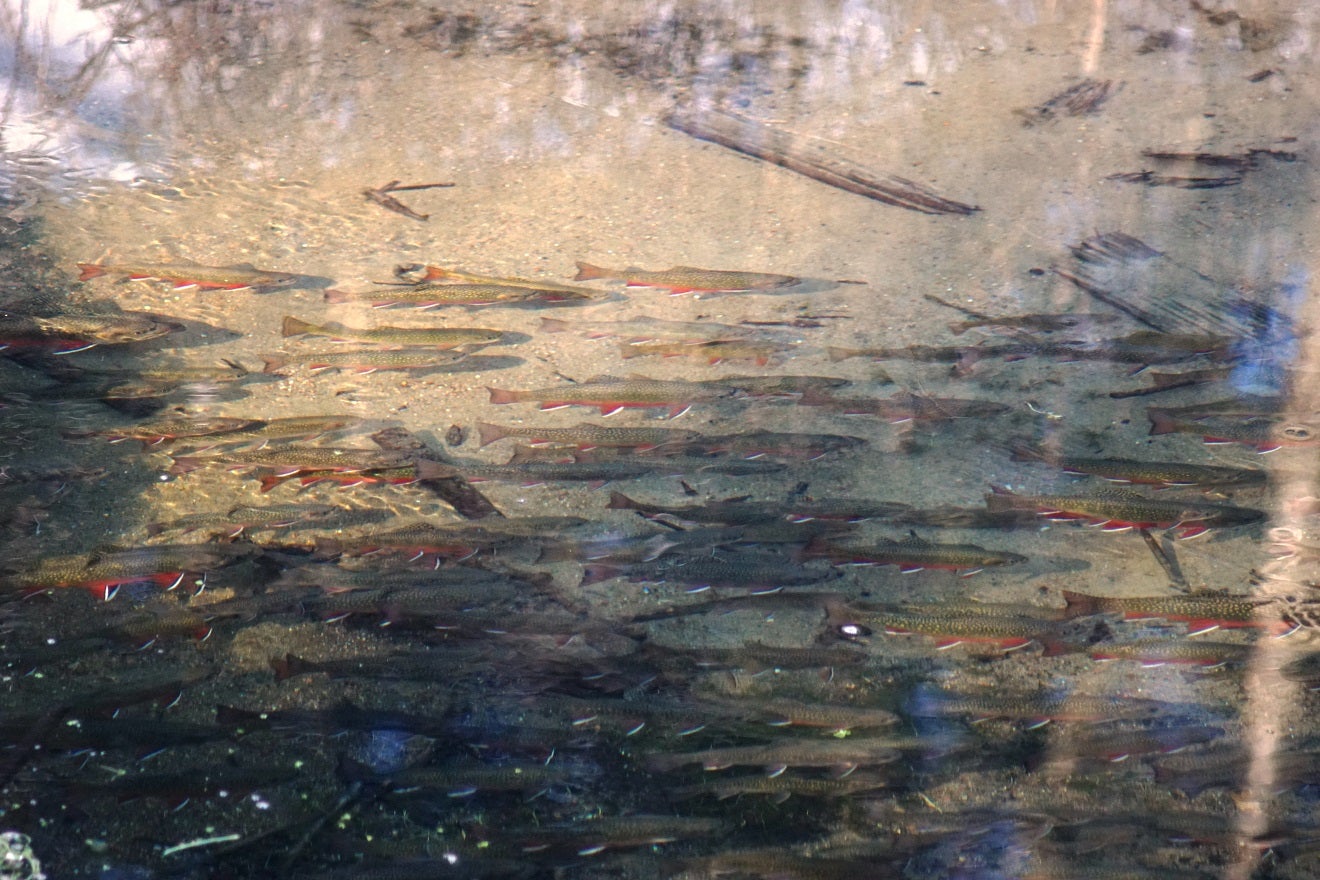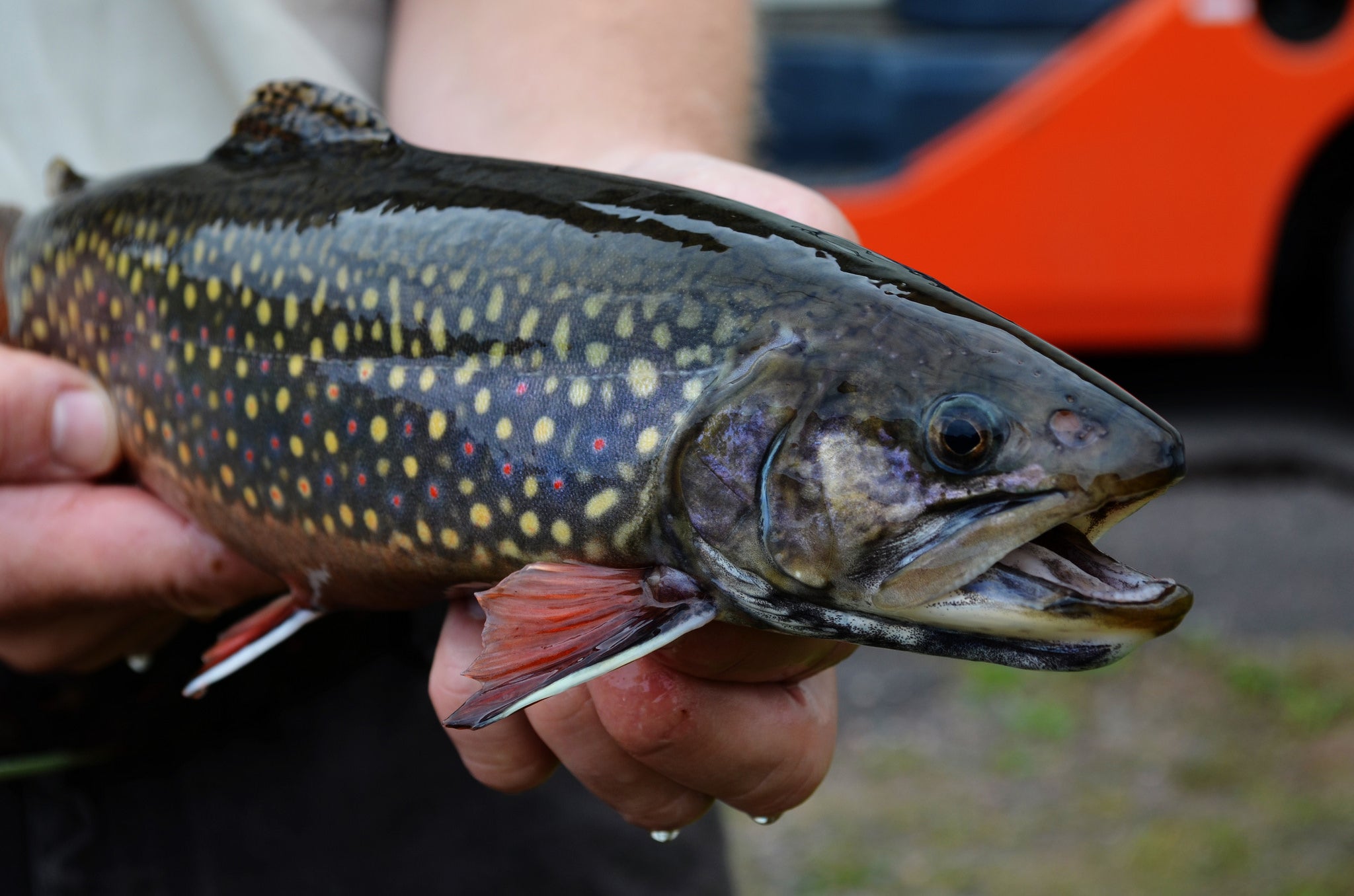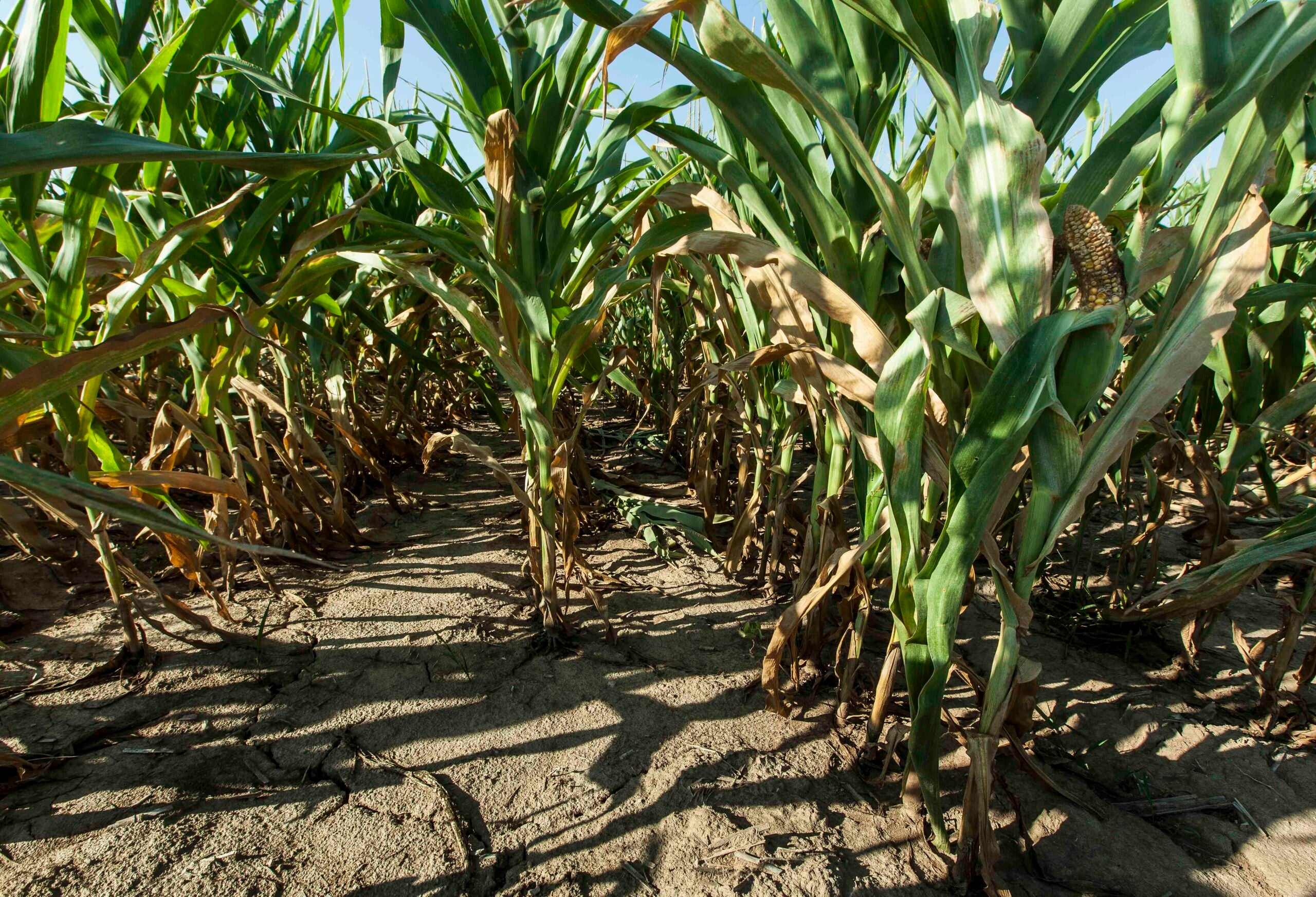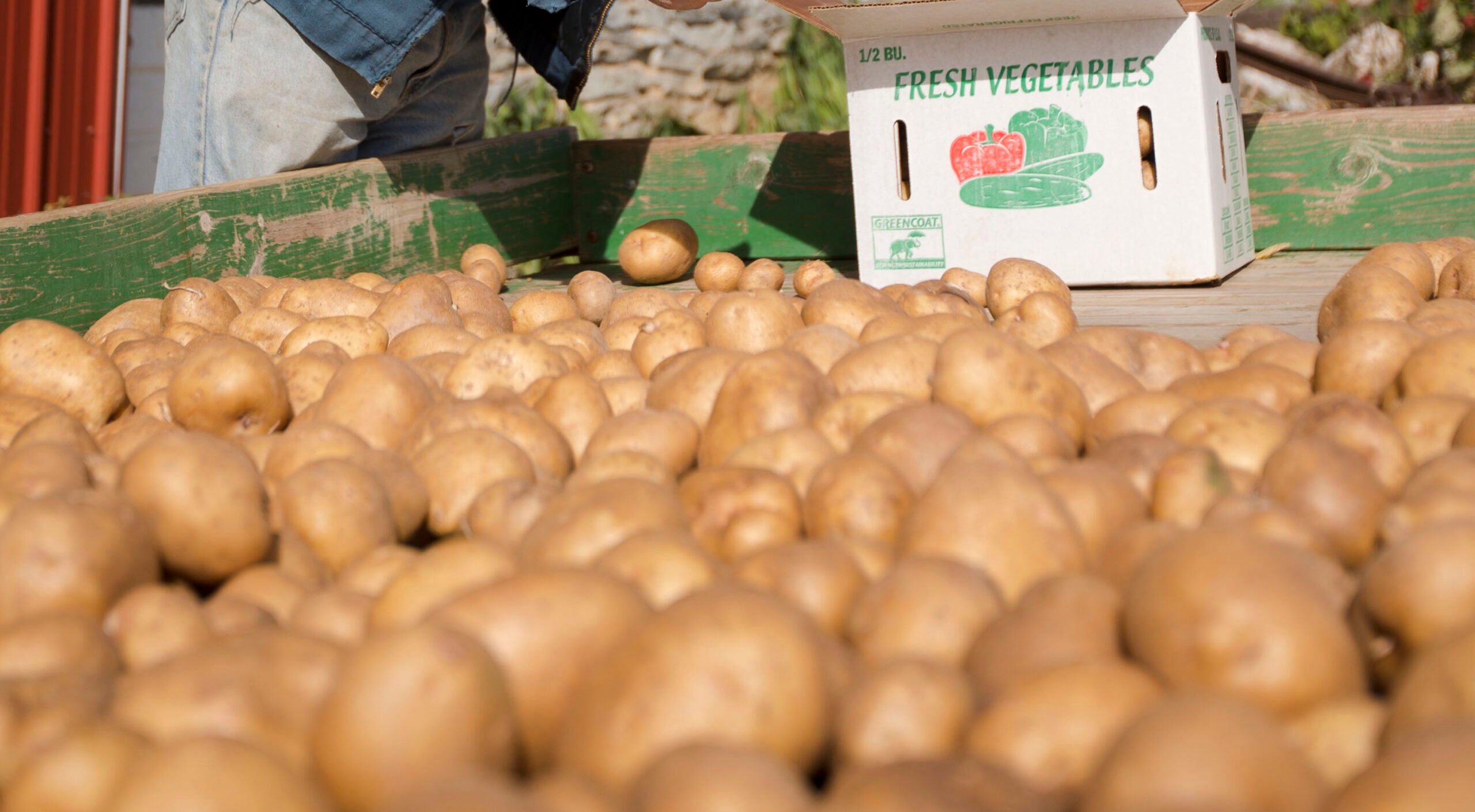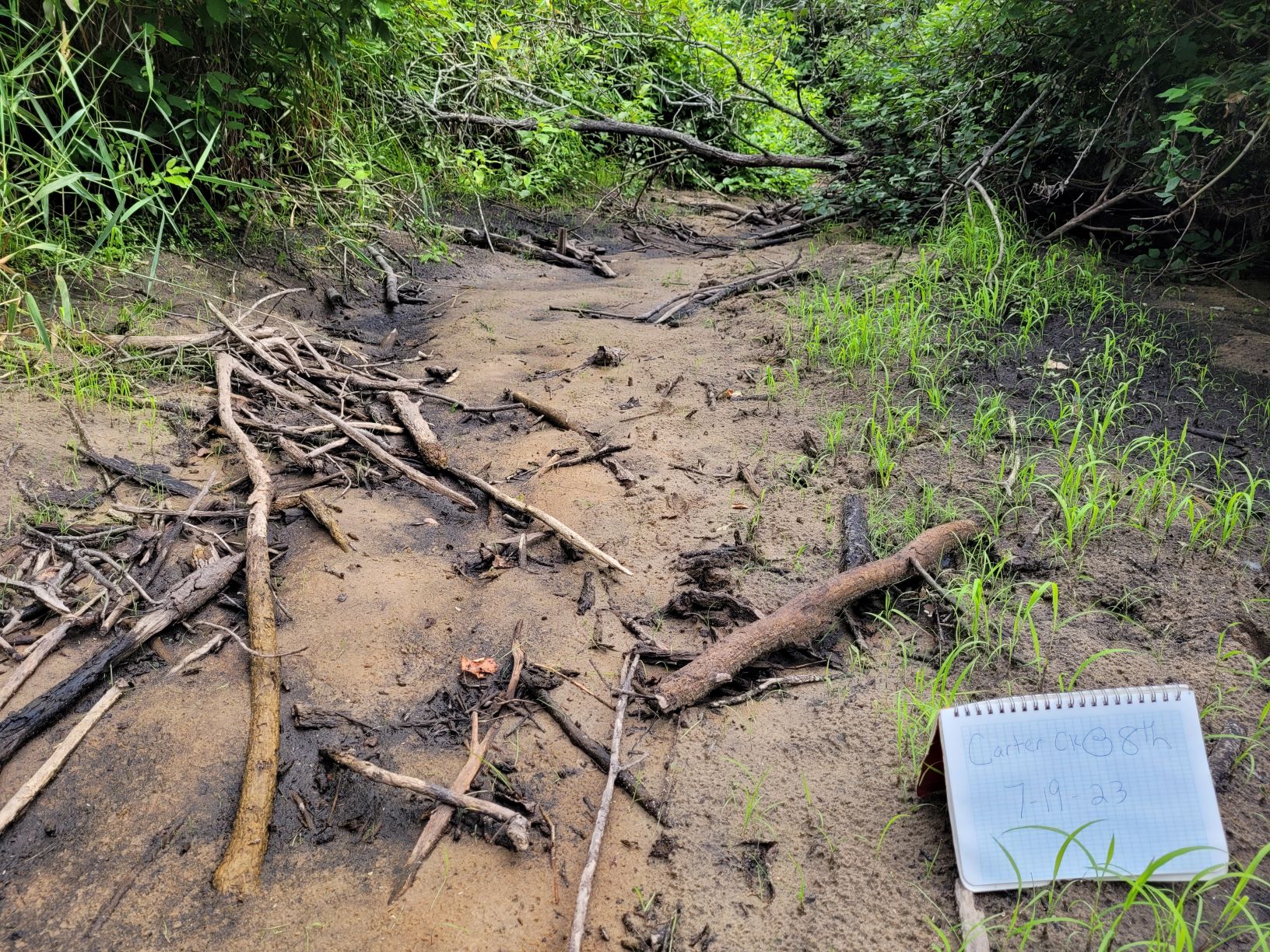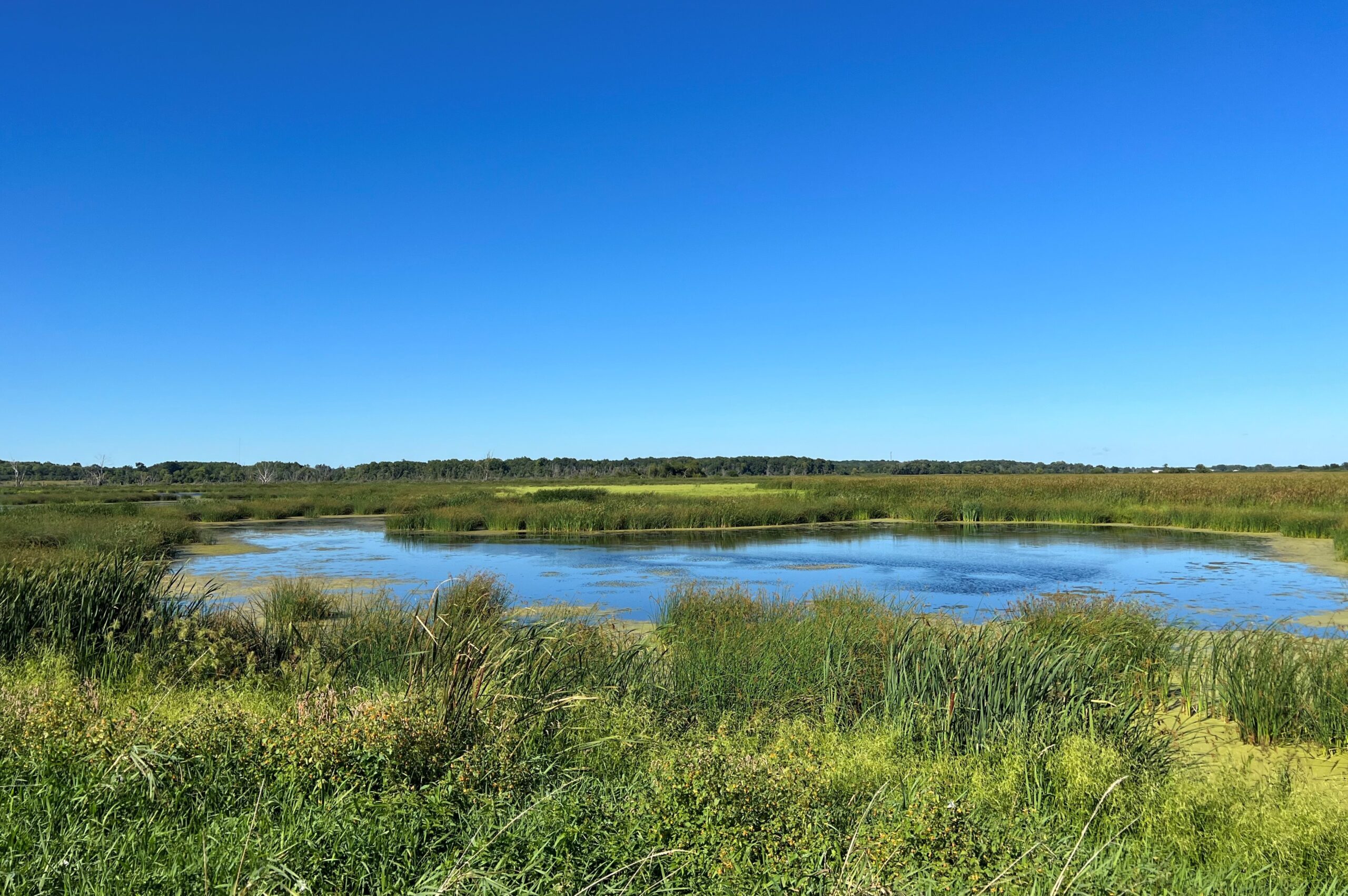Donald Justin Isherwood is a fifth generation farmer, an author and a poet. He is also now a litigant, suing members of his own farming community.
“A most unpleasant experience, as is any lawsuit, because I’m bringing this against a long cherished tradition of my farm sector,” Isherwood said, as he viewed the 1,200 acres he farms in a central Wisconsin region known as the Buena Vista Marsh.
Isherwood is suing the Portage County Drainage District over the tradition of dredging ditches in order to keep fields dry for agriculture. The lawsuit, filed in July 2016, seeks to keep the district from ripping out a half-mile trout habitat Isherwood created in a ditch that runs through his property.
Stay informed on the latest news
Sign up for WPR’s email newsletter.
Donald Justin Isherwood sitting in front of the Isherwood Lateral and trout habitat. Glen Moberg/WPR
On official maps, the ditch is named the Isherwood Lateral, although Isherwood prefers to call it Isherwood Creek. It’s filled with cold, spring fed water, and 200 used Christmas trees Isherwood placed there.
As Isherwood explains it, the trees form a perfect habitat for brook trout, “moving the stream back and forth, narrowing it up, increasing its velocity, creating some holes, exposing the gravel. …The woody material acts as cover for trout,” Isherwood said.
Isherwood said he also believes the wood cleans nitrates out of the water, reducing farm runoff pollution downstream.
“In fact, we are not obstructing the flow but improving it,” he said.
Isherwood points to photographs he took in January and a study by a University of Wisconsin-Stevens Point College of Natural Resources student shows a greatly improved trout population.
“In the last four years, the numbers have gone from several dozens to thousands if not tens of thousands of trout at spawning season,” Isherwood said. “There are regular trout folks who come here who think they’ve seen it all, and their jaw drops.”
More than a century ago, Isherwood Lateral was not a drainage ditch but a naturally occurring stream, which makes it navigable water with a public right attached to it. It’s the legal basis for the lawsuit, which is being heard in Clark County Circuit Court because a Portage County judge appoints members to the Portage County Drainage Board.
Isherwood’s dispute with the drainage district goes back several years. In 2009, he thought he had reached an agreement with them, but the deal fell through, and that’s when he began modifying the stream.
In December, Isherwood finally received a permit from the Wisconsin Department of Natural Resources for his fish habitat, but that’s not enough, said Paul Cieslewicz, chairman of the Portage County Drainage Board.
Paul Cieslewicz in his office in Bancroft holding the engineering documents for the Portage County Drainage District.Glen Moberg/WPR
“He’s changed the profile of our ditch that is engineered by a professional engineer, and that’s illegal,” Cieslewicz said at his office in nearby Bancroft, “So the permit is really not valid without our blessing.”
Cieslewicz paged through a stack of oversized documents approved by the state that say what has to be done to maintain the ditches in the 54,000-acre drainage district.
“His trout habitat is definitely going to come out. There’s no doubt,” Cieslewicz said. “He’s absolutely right. We are dealing with navigable streams, but in 1905, we were legally organized for agricultural reasons. So you can’t just bypass us and say, ‘This was happening before, so now I don’t have to listen to you.’”
Since 1905, the 10 drainage ditches in the district have protected both farmers and the regional economy, Cieslewicz said.
“When you have the land values of the drainage district worth probably $108 million, and that’s not including the cranberry marshes, there’s a lot of money here,” Cieslewicz said.
According to the chairman, there is already a healthy trout population in some of the ditches, without the changes Isherwood has made.
“Ditch number four, that’s the second best trout stream in Portage County,” Cieslewicz said. “There’s never been a reclamation plan in there. Nothing.”
On April 15, Isherwood hosted about 50 farmers, neighbors, scientists and politicians, to convince them more trout would be good for both agriculture and the regional economy.
The guests piled onto flatbed trailers pulled by tractors, which hauled them past an irrigation rig connected to one of the 12 high-capacity wells on Isherwood’s property.
He argued the region’s 2,400 wells are drawing so much groundwater the county drainage district may no longer be necessary.
“There is a legitimate debate whether drainage districts have outworn their welcome, at least in some places, simply because we want to keep the water for irrigation,” Isherwood said.
It was a festive atmosphere when the guests arrived at Isherwood Lateral, as they stood on a wooden bridge looking at the trout swimming in the clear, shallow water. One man brought a fly rod.
Isherwood Lateral and the half-mile stretch Donald Justin Isherwood has converted into a trout habitat. Glen Moberg/WPR
Buena Vista resident Denise Brennecke said she hoped Isherwood prevails in his fight with the drainage board.
“It is a very powerful group, and they’re going to make his life very miserable,” she said. “But I think enough people in the community have been made aware of it that he’ll have strong support. I’d love to see him succeed.”
Three Portage County Board members were at the gathering, and declined to comment, citing the litigation.
Isherwood expects to spend $40,000 on his lawsuit, but he said he is more troubled by the reaction of his neighbors.
Before the DNR approved the trout habitat, Patricia Weller, a farmer who lives downstream, wrote a letter asking the DNR not to.
“After 111 years of time, effort and money have gone into creating and maintaining this drainage system, it seems quite foolish to allow just anyone with a haphazard brainstorm to alter its design,” she wrote.
“They view me as a traitor to the cause. And from their perspective, I am,” Isherwood said. “I have to change some minds.”
Cieslewicz disputes Isherwood’s contention that high-capacity wells have made drainage districts irrelevant. He said that if Isherwood wins, it would set a dangerous precedent.
“The drainage laws are some of the oldest laws in the state of Wisconsin. We will take this as far as we need to go to prevail,” Cieslewicz said.
Cieszlewicz said unless a judge stops him, the drainage board will dredge Isherwood Lateral on July 1.
This story is part of a yearlong reporting project at WPR called State of Change: Water, Food, and the Future of Wisconsin. Find stories on Morning Edition, All Things Considered, The Ideas Network and online.
Wisconsin Public Radio, © Copyright 2024, Board of Regents of the University of Wisconsin System and Wisconsin Educational Communications Board.

